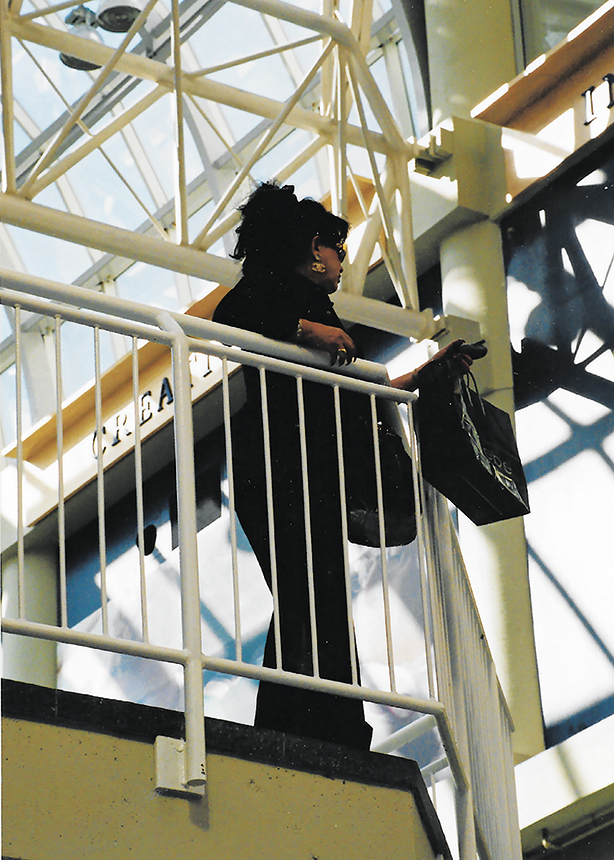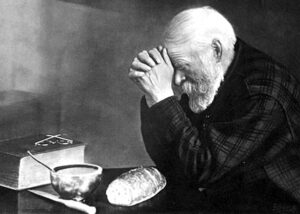The human struggle has always been—and always will be—between worshiping the God who made us or worshiping a god that we have to make for ourselves. Secularism is a myth because there is no such thing as not worshipping.
Advocates of the secularization thesis believe that as science and technology advanced into the future, religion would eventually retreat into the obscurity of the past. But, as William T. Cavanaugh demonstrates in Migrations of the Holy, humanity’s religious impulse has instead been redirected to various cultural institutions. One such institution is the mall.
In Desiring the Kingdom: Worship, Worldview and Cultural Formation (Baker Academic, 2009), co-author James K.A. Smith illuminates the religiosity of the mall. Consider how our mall experience meets many of our religious needs. It provides:
– A promise of salvation.
– A communal web of belonging.
– An invitation into mystery.
– A mission to evangelize others.
– A training of desire towards an ultimate object of love.
Worship through stuff
Worship at the mall promises salvation through stuff. For all have fallen short of the glory of the beautiful images in malls, which insinuate that there is something wrong with us.
“The logic is simple,” Smith explains, “the people in advertisements seem to be enjoying the good life, that billboard mom has it all together: I mean, her kids are smiling and seem remarkably obedient; she is slim and well-dressed and seems so carefree—surely that new minivan with the DVD player and 14 cup holders must have something to do with it.”
In the alluring models and images that showcase the good life, there is religious proclamation: Taste and see that stuff is good. There is a religious demonstration: Behold the redeemed and saintly form of humanity. There is a religious invitation: Imagine yourself with this, like this. And there is a religious dedication: Yes, this new pair of jeans will cost $150, but it’s so worth it.
Responding to the call to worship in advertisements, we are humbled by icons of success and beauty, and overwhelmed by a stabbing recognition: That’s not me. Our worshipful response is to consume things with the high hope of being made new. At the checkout altar at the mall, “priests” transubstantiate our purchases to make the good life more tangible to us. We part with their benediction: “Enjoy your purchase.”
By contrast, worship in the church begins with a confession of sin and ends with the joyful recognition of the promise of salvation through Jesus Christ. Responding to the call to worship, we are humbled by our need and overwhelmed by the stabbing recognition that God loves us despite our sin. At the altar of the church, our worshipful response is to consume the body and blood of Jesus with the high hope of being made new.
Games of competitive comparisons
If another telltale sign of religion is a communal web of belonging, then worship at the mall binds worshippers together in triangulating games of competitive comparisons. Images in the mall inevitably shape our self-image and the standards we use to judge others. While sitting at Starbucks we size up passing shoppers, scorning their make-up job or admiring their fashion sense. Without realizing it, we’ve evaluated others against ideals we’ve absorbed from the mall’s evangelism. We then use these ideals to keep a running tally in our head, congratulating ourselves when we score higher and getting down on ourselves when we score lower. But of course, it’s not all about competition. Worship at the mall gives us a feeling of connection to shoppers around the world who see the same brands and buy the same goods we do.
By contrast, worship in the church binds worshippers together through the triangulating love of God. Worshippers in the church are called to love their neighbour as an expression of their love for God. From the teachings and traditions we absorb in the church, we learn to extend grace to one another and to see Christ in one another. In this way, Christian worshippers are bound together in the communion of saints, everyone encouraging everyone to practise loving their neighbour. Worship in the church connects us to Christians around the world and throughout the centuries who read the same scriptures and worship the same Lord.
The mystery of prosperity
If an element of mystery is another telltale sign of religion, then worship at the mall invites worshippers into the mystery of prosperity. The mall’s clean, bright, inviting and vaulted interior architecture make it easy for us to forget about the outside world. Don’t ask where this prosperity comes from; accept the mysteries of production, transport and disposal!
This worship requires mystery. If we knew how unfair and destructive many of these processes are, how could we go on worshipping? The mystery of the mall invites worshippers to believe that stuff comes from heaven, but at its heart is the unspoken truth of exploitation and injustice that cannot go on forever.
By contrast, worship at the church invites worshippers into the mystery of the triune God, who is outside the world and beyond our wildest comprehension. But God is also a mystery that has been revealed in the world through the person of Jesus Christ crucified. This worship requires both mystery and revelation. If God was not a mystery, how could we truly worship God? On the other hand, if God was not a revealed mystery, how could we worship God? How could we know what or whom we are worshipping? The mystery of the Christian faith invites worshippers to believe that Jesus Christ came from heaven, and at its heart is the unspeakable truth of the God of love and justice whose kingdom, power and glory will go on forever.
Evangelization through marketing
In worship at the mall, the mission to evangelize others is called marketing. Advertisements are not intended to make people buy a product so much as they are intended to make people buy into a product. Super brands like Apple, Nike and Starbucks are quite open about their aims to forge spiritual bonds with consumers. The job of ad executives and brand managers is to tack elaborate meaning-systems onto their products and to invest their mundane products with transcendent qualities. Their ultimate goal is to fulfill this religion’s great monetary commission, baptizing consumers in the name of prosperity, profits and progress.
By contrast, the church’s evangelism is about the call to worship a God who requires no marketing gimmick, no awkward sales pitch of meaning, no tacked-on qualities of transcendence. The job of this God’s missionary executives and church managers is to worship him fully and solely, and to call others to do the same, baptizing them in the (brand) name of the Father, Son and Holy Spirit.
Longing for the good life
Finally, if the training of desire towards an ultimate object of love is the final and most important telltale sign of religion, then worship at the mall is about training worshippers to long for the good life: a life of perpetual youth, beauty, wealth and independence. Worship at the mall sets forth a particular vision of this good life that captures the hearts and imaginations of worshippers. This mostly happens on a subconscious level.
By contrast, worship at the church is about training worshippers to long for the kingdom of God, a kingdom where the first are last, where the greatest are servants, and where it is more blessed to give than to receive. Worship at the church also sets forth a particular vision of the good life that also captures hearts and imaginations. Despite the emphasis we place on words and beliefs, much of this also happens on a subconscious level. Worshippers at the church are shaped by the practices of gathering, greeting, praying, reading, singing, listening, confessing, giving and celebrating together.
If our definition of religion remains narrowly fixed on beliefs and practices related to a supernatural order of existence, we will miss the fact that religious beings like ourselves cannot but superimpose religious meaning on our natural order of existence, which raises the question of “How ‘natural’ is our existence?”
Capitalizing on the way that society is currently unplugging itself from traditional forms of religion, the mall is an example of a cultural institution that has successfully read the religious market and opened a new outlet for selling and consuming transcendence.
The next time you enter a mall, remember the words of the Apostle John: “Dear children, keep yourselves from idols” (I John 5:21).
Thomas Bergen is a graduate of Vancouver’s Regent College. This is an edited version of one of three sermons he gave at Point Grey Inter-Mennonite Church on the theme of worship; the other two were entitled “Worship at the stadium” and “Worship at the university.”
![]() Ross W. Muir took these photos for a Christianity and Contemporary Culture class assignment on “exegeting the presence of God (gods) in and around Toronto’s Eaton Centre” during his master of theological studies degree at Tyndale Seminary in the early 2000s.
Ross W. Muir took these photos for a Christianity and Contemporary Culture class assignment on “exegeting the presence of God (gods) in and around Toronto’s Eaton Centre” during his master of theological studies degree at Tyndale Seminary in the early 2000s.
For discussion
1. How often do you go to the mall? What are you looking for when you go? What makes a shopping centre alluring? Is it wrong to enjoy shopping?
2. Thomas Bergen says humans struggle between worshipping God or worshipping gods made by humans, and writes, “Secularism is a myth because there is no such thing as not worshipping.” Do you agree? What does it mean to “worship” at the mall?
3. What advertisements are most effective in inviting us to worship at the mall? Do you agree that advertisements call us “to consume things with the high hope of being made new”? How much do brand names shape our self-image and cause us to judge others? How do you respond to super brands that try to “forge spiritual bonds with consumers”?
4. How do we work at resisting the call to worship at the shopping mall? As shopping habits have changed because of the internet, how has this affected the religion of consumerism?
5. What do you think Thomas Bergen might have said in his sermons on “Worship at the stadium” and “Worship at the university”?
—By Barb Draper










Leave a Reply
You must be logged in to post a comment.